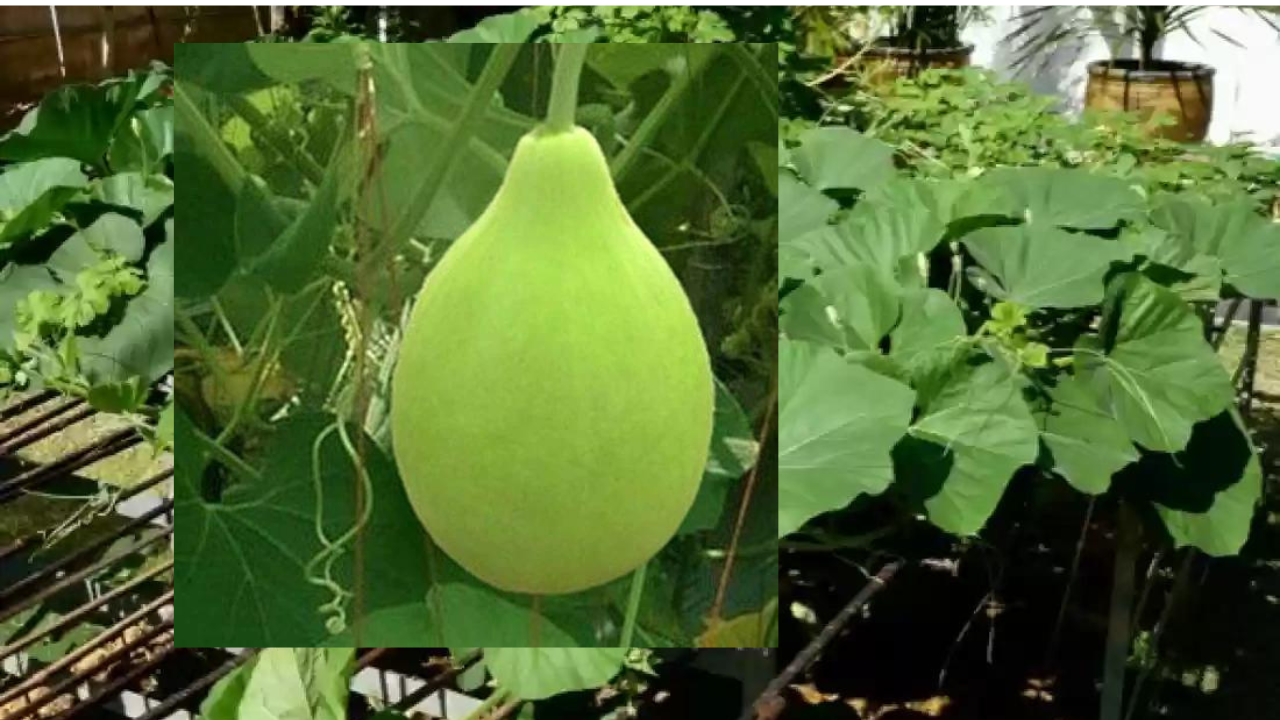Lattu Ghiya, also known as Bottle Gourd, is a versatile and easy-to-grow vegetable that can thrive in various climates. Whether you're a seasoned gardener or a beginner, cultivating Lattu Ghiya in your garden can be a rewarding experience. In this guide, we'll walk you through the process of planting and caring for Lattu Ghiya, from seed to harvest.
1. Introduction to Lattu Ghiya
Lattu Ghiya, scientifically known as Lagenaria siceraria, belongs to the Cucurbitaceae family. It is native to Africa and Asia and has been cultivated for centuries for its edible fruits and medicinal properties. The vegetable is commonly used in culinary dishes and is rich in essential nutrients like vitamins A, C, and K, as well as minerals like calcium and magnesium.
2. Understanding Lattu Ghiya
What is Lattu Ghiya?
Lattu Ghiya is a vine plant that produces elongated, bottle-shaped fruits. The fruits have a mild flavor and a tender texture, making them a popular choice in various cuisines around the world. They can be harvested young for tender, immature fruits or left to mature for seeds and hard-shelled gourds.
Benefits of Growing Lattu Ghiya
Growing Lattu Ghiya in your garden comes with several benefits. Not only is it a low-maintenance plant, but it also offers a bountiful harvest with minimal effort. Additionally, Lattu Ghiya is a versatile vegetable that can be used in a variety of dishes, from soups and stews to stir-fries and salads.
3. Preparation for Planting
Before planting Lattu Ghiya seeds, it's essential to prepare the soil and select the right location for optimal growth.
Selecting the Right Location
Lattu Ghiya thrives in warm, sunny locations with well-drained soil. Choose a spot in your garden that receives full sunlight for at least six to eight hours a day. Avoid areas with heavy clay soil or poor drainage, as this can lead to waterlogged roots and stunted growth.
Soil Preparation
Prepare the soil by loosening it with a garden fork or tiller to a depth of at least 12 inches. Remove any weeds, rocks, or debris from the area, as they can compete with Lattu Ghiya for nutrients and water. Incorporate organic matter like compost or aged manure into the soil to improve its fertility and structure.
4. Planting Lattu Ghiya Seeds
Once the soil is prepared, it's time to plant Lattu Ghiya seeds.
Seed Selection
Choose high-quality seeds from a reputable supplier or source them from mature Lattu Ghiya fruits. Look for seeds that are plump, firm, and free from signs of damage or decay.
Seed Planting Depth
Plant the seeds directly into the soil at a depth of about one inch. Space the seeds at least 12 inches apart to allow room for the vines to spread as they grow.
Spacing
When planting multiple Lattu Ghiya plants, space them at least three to four feet apart to prevent overcrowding and ensure adequate airflow.
5. Watering and Maintenance
Proper watering and maintenance are crucial for the healthy growth of Lattu Ghiya plants.
Watering Schedule
Water the newly planted seeds thoroughly to settle the soil and provide moisture for germination. Once the plants are established, water them deeply and evenly, keeping the soil consistently moist but not waterlogged.
Fertilization
Fertilize Lattu Ghiya plants every two to three weeks with a balanced fertilizer to promote vigorous growth and abundant fruit production.
Pest Control
Monitor the plants regularly for signs of pests or diseases, such as aphids, cucumber beetles, or powdery mildew. Use organic pest control methods like neem oil or insecticidal soap to manage infestations and prevent damage to the plants.
6. Pruning and Training
As Lattu Ghiya vines grow, they may become unruly and tangled. Prune the vines as needed to remove dead or damaged foliage and encourage airflow and sunlight penetration. You can also train the vines to climb trellises or supports to save space and prevent them from sprawling on the ground.
7. Harvesting Lattu Ghiya
Lattu Ghiya fruits can be harvested at different stages of maturity, depending on your preference and intended use.
Conclusion
Growing Lattu Ghiya in your garden is a rewarding experience that can provide you with a bountiful harvest of nutritious vegetables. By following the simple steps outlined in this guide, you can enjoy fresh and delicious Lattu Ghiya fruits throughout the growing season.

FAQs
-
How long does it take for Lattu Ghiya seeds to germinate?
- Lattu Ghiya seeds typically germinate within seven to ten days under optimal conditions.
-
Can Lattu Ghiya be grown in containers?
- Yes, Lattu Ghiya can be grown in containers as long as they are large enough to accommodate the sprawling vines.
-
Do Lattu Ghiya plants require pollination?
- Yes, Lattu Ghiya plants are pollinated by bees and other insects to produce fruits.
-
What is the best time to harvest Lattu Ghiya?
- Lattu Ghiya fruits can be harvested when they are young and tender for optimal flavor and texture.
-
How do you store harvested Lattu Ghiya fruits?
- Store harvested Lattu Ghiya fruits in a cool, dry place away from direct sunlight for extended freshness.

